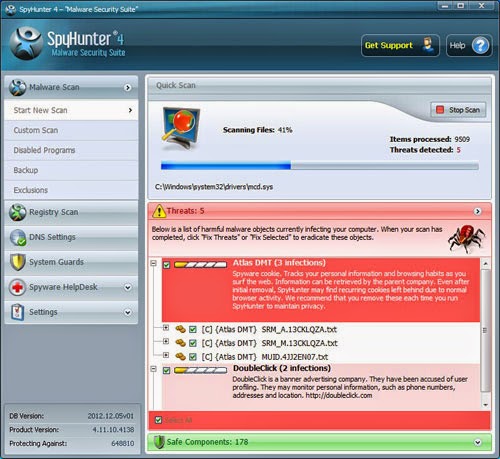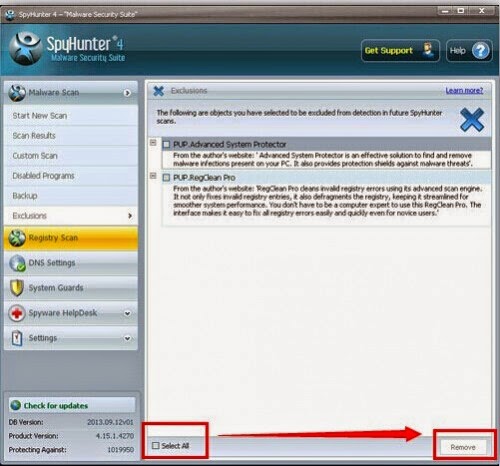I am running Win 7 64bit Home Premium on HP Pavillion p6837c with SvcPac 1 installed and have auto updates enabled. About 4 days ago started getting random BSOD '0X00009AF8 Driver_IRQL Pending Operation'. Goes away on reboot and occurs randomly during the day. Cannot find this error number via google search so thanks in advance for any help!
Description of Fake Bsod 0x00009af8 Virus
Fake Bsod 0x00009af8 is actually an online phone scan, showing you message that you PC is infected by virus, adware, or other unwanted programs. If you want technology support, you can have a recommended call. As a matter of fact, its existence in your PC means that your PC is penetrated by adware, PUP, or malware. Therefore, when you face it, don’t believe it and call its number to ask for help. It aims to get profits from you via cheat you into using its services.
Fake Bsod 0x00009af8 can be promoted via diverse channels, for example, 1) by free download, 2) by bundling with sponsored ads, suspicious links, and spam emails, 3) by cooperating with suspicious websites.
When it slips into your PC, you can see fake warning showed by it in Internet Explorer, Google Chrome, Mozilla Firefox, and other common browsers. That is so annoying that you have to get rid of it from your PC. Certainly, it also can make your PC vulnerable, and cause other threats.
Methods to Get Rid of Fake Bsod 0x00009af8 Virus
Recently, BSOD: Error offen happens. If you let it inside your PC, some operatons or application will be blocked. So, it is necessary for you to get rid of it from your PC. There are Three methods to help your break away it.
Method A: Manually Remove Fake Bsod 0x00009af8 Virus
Step1.Uninstall Fake Bsod 0x00009af8 Virus from your Control panel
For Windows 7
1. Click on Start button;
2. Hit Control Panel;
3. Switch to Uninstall a program;
4. Find out the malicious program;
5. Uninstall the unwanted software.
For Windows 8
1. Click on Start button;
2. Select Search from the list and search for “control panel”
3. Switch to Uninstall a program;
4. Find out the malicious program;
5. Uninstall the unwanted software.
For Windows XP
1. Click on Start button;
2. Press Control Panel;
3. Go to Add or Remove Programs;
4. Choose suspicious installer in the “Currently Installed Programs” window
5. Switch to Change or Remove.
Step2. End up all the processes of Fake Bsod 0x00009af8 Virus in Windows Task Manager
1. Go to Windows Task Manager by press Ctrl+Shift+Esc on the keyboard

2. Find the Process, look for all malicious processes related to Fake Bsod 0x00009af8 Virus, and then hit End process to delete all malicious processes and files.

Step3. Delete Fake Bsod 0x00009af8 Virus in registries.
1. Press “windows” + “R” to load the Run dialog box
2. Type “regedit” in Runbox and clicking OK to open Registry Editor.

3. After Registry Editor, you can glance through all files in your computer, and then find out all listed hazardous items.

4. Right click on malicious items and click Delete to Remove.
If you cannot get help from the manual removal guide, you can take consideration to download Spyhunter, a powerful auto-security tool here.
Method B: Automatically Remove Fake Bsod 0x00009af8 Virus
SpyHunter is a real-time anti-virus program and automatic removal tool, which is able to do a lot of things for you.
- Detect and remove the latest malware attacks, such as Trojans, worms, rootkits, and so on.
- Protect your PC from varieties of infections and threats all the time.
- Allow you to restore backed up objects
1. Press the following button to download SpyHunter and its files.
2. Click Run to install the files related to SpyHunter step by step.



Step 2. Use SpyHunter to get rid of Fake Bsod 0x00009af8 Virus from your machine.
1. Scan and detect your PC system automatically with SpyHunter when finishing the installation.


3. After detecting all the threats in PC successfully, please check Select All, and then click Remove button to get rid of all threats in your PC.

Note: If you are a novice in PC operation, you can install SpyHunter to help you dealt with this error, as well as protect your PC from it and similar threats.


No comments:
Post a Comment